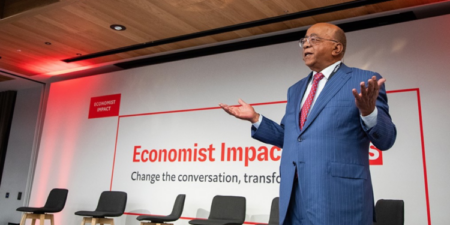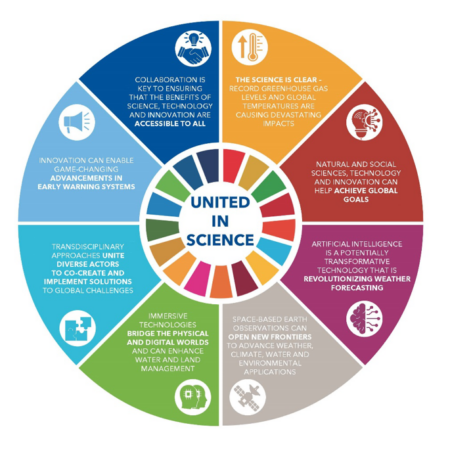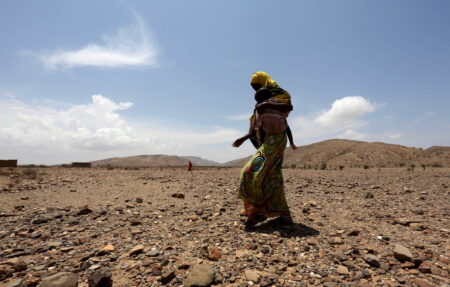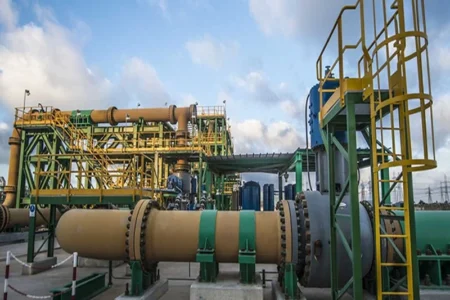- The 300MW wind farm will be financed, built, and operated by AMEA Power under a 25-year power purchase agreement with Ethiopian Electric Power.
- Covering an area of 18,000 hectares, this project is expected to generate 1,400GWh of electricity.
- Dubai-based renewables developer AMEA Power has been involved in several notable projects across Africa.
Ethiopia is on a path to hosting the Horn of Africa’s largest wind farm. This comes after the country signed an agreement with Dubai-based renewables developer AMEA Power to construct the energy plant in Somali Province, situated to the East of the continent’s second most populous country.
At an estimated cost of $620 million, Aysha Wind Power Project will not only bolster Ethiopia’s energy capacity but also mark a giant step towards sustainable development in the Horn of Africa region.
The letter-of-award for this monumental project was signed by Ahmed Shide, Ethiopia’s Finance Minister, and AMEA Power’s representatives in Dubai during the COP28 climate change summit. The signing, witnessed by global leaders and climate advocates, underscores the project’s importance in Ethiopia’s long-term energy strategy and its commitment to green energy.
The Aysha Wind Power Project
The Aysha Wind Power Project, located in the Somali province of northeastern Ethiopia, is designed to be a game-changer. The 300MW wind farm will be financed, built, and operated by AMEA Power under a 25-year power purchase agreement with Ethiopian Electric Power, the state-owned utility.
Spanning an area of 18,000 hectares, this ambitious project is expected to generate 1,400GWh of electricity per year, which is enough to power approximately four million households.
Beyond its strong energy output, the Aysha Wind Power Project is poised to have a transformative impact on Ethiopia’s economy and environment. By cutting carbon emissions by 690,000 tonnes annually, the project aligns with global efforts to combat climate change and transition to renewable energy sources.
This reduction in carbon footprint will contribute in a big way to Ethiopia’s climate goals, reinforcing the nation’s position as a leader in sustainable development in Africa.
Ethipia’s Finance Minister Ahmed Shide highligted the broader implications of the project, stating, “This project is not just about generating power, it’s about energizing our future through sustainable green development.” Currently, Ethiopia is seeking to harness renewable energy not only to meet current demands but also to drive future growth.
The economic benefits of the Aysha Wind Power Project extend beyond energy production. The construction and operation phases are expected to create over 1,500 direct jobs, providing much-needed employment opportunities in the region. The project’s location in Somali province, an area earmarked by the Ethiopian government as a future logistics and industrial hub, further underscores its strategic importance.
Growing energy needs in Ethiopia
Hussain Al Nowais, the chair of AMEA Power, lauded Aysha Wind Power Project as a milestone for his company. “Aysha represents a significant achievement for AMEA Power, not just in terms of scale but also in terms of its impact on the region’s development,” he said. Al Nowais highlighted the project’s potential to catalyze community development, enhance local industries, and position Somali province as a key player in Ethiopia’s industrial future.
The project’s significance is further highlighted by its timing and context. Ethiopia’s commitment to such a large-scale wind energy project is a testament to its proactive approach to addressing climate change while also meeting the growing energy needs of its population.
AMEA Power presence in Africa
AMEA Power’s investment in Ethiopia is a reflection of the increasing confidence in the country’s renewable energy sector. The company’s decision to embark on this ambitious project in the Horn of Africa signals a broader trend of international interest in Africa’s renewable energy potential.
Dubai-based renewables developer AMEA Power has been involved in several notable projects across Africa, focusing on the development of renewable energy solutions that contribute in a big way to the region’s energy infrastructure. Here are some of their outstanding projects:
Sheikh Mohamed Bin Zayed Solar Power Plant, Togo
One of AMEA’s flagship projects in Africa, this 50 MW solar power plant in Blitta, Togo, is the largest grid-connected solar plant in West Africa. It has the capacity to supply electricity to more than 158,000 homes and has significantly boosted Togo’s renewable energy targets.
AMEA TESSO Power Plant, Chad
This is a 60 MW hybrid solar and thermal power plant in N’Djamena, Chad. It is one of the largest renewable energy projects in the country, aimed at reducing reliance on diesel generators and increasing access to electricity.
Greenfield Solar Power Project, Egypt
AMEA Power is developing a large-scale solar PV project in Egypt, with a capacity of 200 MW. This project is part of the country’s ambitious plan to diversify its energy mix and increase the share of renewables.
Wind Power Project, Morocco
AMEA Power has also ventured into wind energy in North Africa. They are involved in the development of wind farms in Morocco, leveraging the country’s strong wind resources to generate clean energy and support its renewable energy goals.
Solar Power Projects, Burkina Faso
AMEA Power is engaged in the development of solar power plants in Burkina Faso, contributing to the country’s efforts to improve electricity access and promote sustainable energy solutions.
These projects highlight AMEA Power’s commitment to expanding renewable energy infrastructure across Africa, contributing to the continent’s sustainable development and energy security.
Read also: Is Africa climate change management plan weak or strong?











